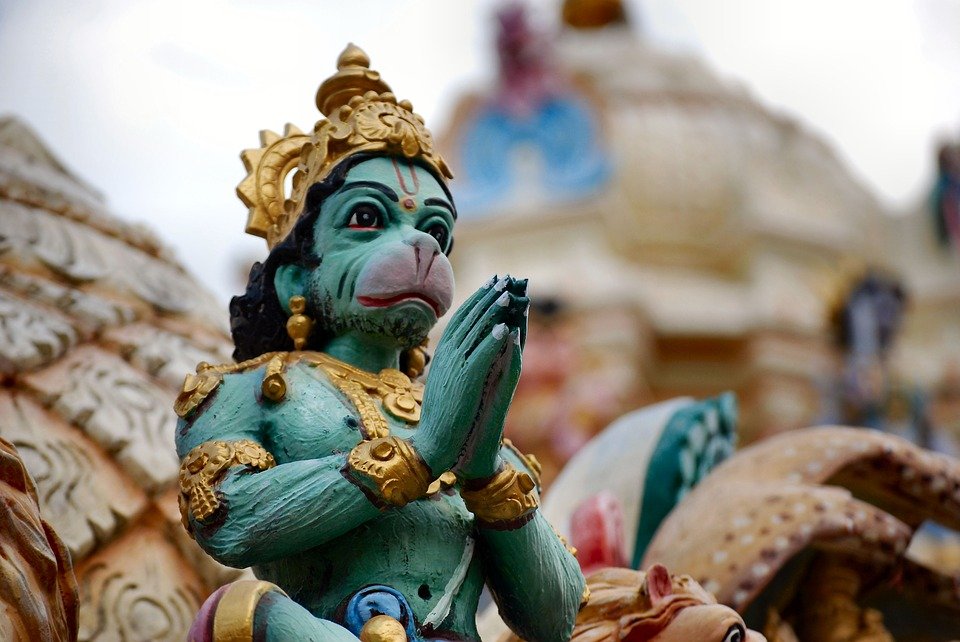
What is the ethnicity and caste of Hanuman?
Yogi Adityanath, the chief minister of Uttar Pradesh has recently declared Hanuman (one of the protagonists of many ancient tales and Ramayana) as Dalit. On 27th of November during the election period of Rajasthan, he has stated that Hanuman is a Dalit as he lived in jungle. Today, the trend of moving forward by adjusting the issues of Hinduism and the Dalit people has increased. The defeat of Bharatiya Janata Party in few states has given rise to these discussions even more.
During the elections of 2014, BJP and Modi leadership were taking the discussions about Hinduism, the provision of Tripal talakh, and the events of Babari Masjid as main bias but they have been accused of not doing anything since then. The leaders of BJP have been in light often due to the debate about Rahul Gandhi’s tribe or the question of Congress supporting Christians. The activities of Rahul Gandhi visiting Nepal and Pashupatinath temple is famous as well while many critics have analysed this activity a way of gaining the support of Hindu followers. The discussion raised about Hanuman has put Yogi Adityanath in a complication. However he has raised a great topic: Is Hanuman Dalit?
Even if Hanuman is dalit, there is no division of cast, religion left in Nepali culture. This new identity of Hanuman wouldn’t create any difference in Hinduism. Hanuman’s father was a great historic warrior of Kesar Banar Sena. Now let’s talk about the fact which three things are considered important as determinative elements of the caste; Birth, Growth and Karma. Let’s talk about Karna, who was born as Chetri but grew up in the family of horse-bearers. This made him recognized as Sudra throughout his life. Now, let us talk about Ravan, who is born in the Brahmin family, even though he is counted in Asuras(demons). Hanuman is also born in the family of monkeys but his tribe is different. In this account, to determine the tribe of Hanuman on the basis of birth and growth is a harder action.
What we are trying to say is in eternal tradition religious belief and caste discussions are not open to any kind of discrimination. A Chhetri born person can be Sudra or a Sudra can be recognized as Brahmin. The definition of Brahmin is quest for knowledge and there are ways to be recognized as Brahmin through our deeds. Lord Krishna himself has said this to Arjun in Gita. When talking about Hanuman today, I present few verses of Hanuman Chalisa (a Hindu mantra devoted to Lord Hanuman)
हात बज्र ओ ध्वजा बिराजे
काण्धें मुञ्ज जनेउ साजे
You have the Bajra and the weapon in your hands, and the sacred-thread made of the grass adorns your shoulder.
शंकर सुबन केसरी नन्दन
तेज प्रताप महा जगबन्धन
O embodiment of Shiva, the delighter of Kesari, your aura and majesty is great and is revered by the whole world
राम दुत अतुलित बलधामा
अन्जनीपुत्र पवनसुत नामा
you are the trusted messenger of Rama and you are the abode of incomparable strength. You are known by the names of Anjaniputra (son of Anjana) and Pavanasuta (son of Pawan)
Now let’s go towards Hanuman’s birth. Hanuman Chalisa has described him as the son of Shankara, Anjani, Pawan, and Kesari. Now do these facts of his birth above make him Dalit?
Hanuman’s mother Anjana was from monkey tribe. But according to other facts, Anjana was an angel who was later cursed and became a monkey. Again some mythologies state that Lord Indra was the one who cursed Anjana while some say she was cursed as she created hindrance in the meditation of a sage. Lord Bayu( lord of wind) offered Anjana the sperm of Lord Shiva and Hanuman was born. Due to this Hanuman is also considered as an avatar of Lord Shiva. There is another belief about Hanuman that is related to Ramayana. When king Dashrath was performing the rituals for the birth of his sons, lord of fire (Agni Devta) offered rice pudding as Prasad and the part of Prasad was taken away by a bird which was later given to Anjana by the lord of wind (Bayu Devta) which leads to the birth of Hanuman. These myths about birth of Hanuman already prove that he was supernatural by birth.
Let us leave these things here and go over to the things that determine someone’s ethnicity. Even in verses of Hanuman Chalisa it has been mentioned about the armors and weapons before the mention of sacred thread. A person carrying armors would be considered as a warrior or Chhetri and a person wearing the sacred thread is considered to be Brahmin.
In Ramayana, the conversation between Ravana and Hanuman was in Sanskrit. But during that time, Sanskrit was only the language of Brahmins and Gods. Now the ethnicity of Hanuman is still not determined. Let’s say we are still in dilemma whether the source of immense knowledge and enormous power, Hanuman is Dalit or not.
And because of the flag he owned, he ought to give a sense of loyalty to a state or a king. In this way, it is possible that he may be of any other species, but hanuman has stated in his own sentence, he is only a true devotee of lord Rama.
Actually, Hanuman is not someone carrying identity of any religion or ethnic group. He is supernatural and mythological character who is far above from any kind of ethnic division. In eternal tradition, the race, character, and discrimination have come only as a basis for exploitation and imperialism. Our eternal tradition is far above from any cultural or ethnic division. It is a great sin to raise fingers on Hanuman or any other character from the history in terms of ethnic division.
Love and equality are everything. In the ocean of eternal culture everyone is equal and everyone is welcomed.
Written By Suyog Dhakal
Translated By Archeesa Aryal

